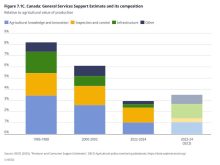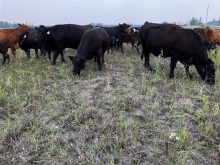Variable-rate fertilizer had almost no yield penalty compared to blanket coverage in the first year of a trial studying how management practices influence nutrient use and loss.
“This was encouraging,” said researcher Blake Weiseth.
In 2021’s drought conditions, lower-lying areas also had significantly higher yields regardless of management practices, said Weiseth.
Weiseth is the applied research lead at Discovery Farm Langham near Langham, Sask., and is the agriculture research chair at Saskatchewan Polytechnic.
Glacier FarmMedia, the Manitoba Co-operator’s parent company, owns Discovery Farm.
Read Also

Still hard to predict precise fertilizer payback
Despite decades of advances, international research finds no clear answer for where and when adding nutrient will fail to boost growth.
Weiseth presented during the University of Saskatchewan’s 2022 Soils and Crops Conference on March 8.
The two-year study will ultimately measure how different beneficial management practices (BMPs) affect how nutrients are lost during snowmelt run-off. On March 15, Weiseth told the Co-operator he was still waiting for the snow to melt enough to run off and be sampled.
The study area comprises eight hydrologically independent “basins” within an area of about 16 hectares (nearly 40 acres). Surface drainage ditches take water out of the basins.
Weiseth also studied how slope and position on that slope affected the crop and run-off, separating areas into up-slope, mid-slope, and down-slope areas.
He planted three annual crop treatments: a control of flax, same-rate fertilizer coverage and no post-harvest residue management; flax with variable-rate fertilizer and no post-harvest residue management; and flax with same-rate fertilizer and with light tillage post-harvest to manage residue.
He also planted a forage polycrop mixture.
In terms of grain yield, the control and the variable-rate plots produced just under seven bushels per acre (yields were well below average due to drought).
Input costs on the variable-rate acres were about $161/acre to the control’s $171/acre. The variable-rate plots used about 10 per cent less fertilizer than the control.
The residue-managed plots produced about 10 bu./ac. These received the same fertilizer application as the control.
Down-slope areas outperformed up-slope and mid-slope areas by a significant margin.
“In a very dry year, under severe drought conditions, any extra soil moistures that might come from just how water runs naturally through the field can have significant impact on the yield,” he said.
The Prairies seem to swing between extremes of drought and excess moisture, Weiseth added. He said he’s interested to further explore how BMPs can manage water — retain more water on a hilltop, for instance.
“Looking at how can we make best use of our water, I think it’s relevant across time,” he said.















